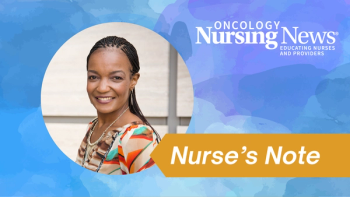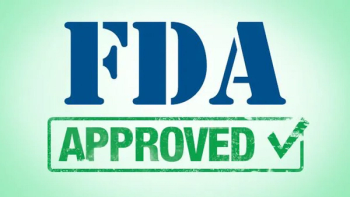
- December 2017
- Volume 12
- Issue 9
Information Is Giving Out, Communication Is Getting Through
To help convey effective messages, nurses should determine how much of the disease a patient understands.
Sydney J. Harris, an American author and syndicated columnist for the Chicago Sun-Times, wrote that the words information and communication often are used interchangeably but signify different things. Harris, who died in 1986, astutely noted that “information is giving out and communication is getting through.”
Effective communication is an interactive process, with both parties mutually engaged in the conversation. However, all too often our interactions are anything but effective—and in oncology practice, poor communication with patients can lead to confusion or misunderstanding and potentially compromise patient care.
To identify best practices for effective communication with patients with cancer, the American Society of Clinical Oncology convened a multidisciplinary panel of experts in medical oncology, psychiatry, nursing, hospice and palliative medicine, communication skills, health disparities, and advocacy to review the literature and formulate recommendations. The panel addressed several areas, ranging from identifying core communication skills to describing strategies for related training.
One of the core recommendations is to determine the patient’s understanding of his or her disease, clinical status, and prognosis. Sounds simple enough, but many patients do not fully know or understand the extent of their disease. I still remember the patient who watched the oncologist draw the anatomy of the colon on exam room paper and write survival statistics next to it, yet when I asked that patient what he knew about his disease, he said, “I have a 60% cancer of the semicolon.” That type of response illustrates the importance of assessing the patient’s understanding.
Patients often get flustered when asked to repeat what they have been told or taught. A better way to assess their understanding is to say, “I want to be sure I’ve done a good job explaining this. Please recap what we’ve been talking about.”
When a misunderstanding is identified, the clinician can respond, “I haven’t done a very good job explaining this,” and then use a different approach to convey information.
Prior to each conversation, the clinician should review the patient’s medical information, establish goals for the conversation, and anticipate the needs and responses of the patient and family, according to the recommendations. Providing information is easy but skips the step of mutually establishing goals for the conversation. Teaching about treatment adverse effects, for instance, will be ineffective if the patient is focused on the unexpected news of a cancer recurrence.
Simply asking “What would you like to discuss or learn about during today’s visit?” can identify the patient’s needs and priorities and reduce time wasted discussing topics of little or no interest to the patient.
When patients who are asked what they’d like to talk about say that they have nothing specific to discuss, consider asking “What is of most concern to you right now?” The answers often are surprising and may be completely unrelated to the patient’s cancer treatment. This question also helps individualize documentation of the patient’s visit.
Another recommendation centers on patients’ awareness of all treatment options, including clinical trials and palliative care, which can be initiated simultaneously with other treatment modalities when appropriate. The panel used the term bidirectional in reference to discussions of end-of-life care and advised starting conversations about the patient’s preferences early in the course of incurable disease, readdressing the topic periodically, based on the patient’s clinical course.
“Enter clinical encounters with a sense of curiosity, aware that any patient and family, regardless of their background, may have beliefs, experiences, understandings, and expectations that are different from the clinician’s,” recommends the panel.
In practical terms, that means suspending judgment and making an effort to learn more about the patients. It also presents an opportunity to examine our biases and assumptions and learn more about ourselves, as well.
The experts recommend communication skills training for clinicians that includes learning about self-awareness and situational awareness related to emotions, attitudes, and underlying beliefs that may affect communication. One strategy to develop awareness involves reflecting on difficult, challenging, or unpleasant patient encounters, along with considering the elements of patient care that are satisfying or provide a sense of meaning.
The consensus guidelines, published on September 11, 2017, are available at ascopubs.org/doi/full/10.1200/JCO.2017.75.2311. To facilitate communication skills training, a number of no-cost resources have been developed, including slide sets, a data supplement, and clinical tools and resources (accessible at asco.org/supportive-care-guidelines). A 13-page summary of the guidelines also is available (consider posting 1 page a week in the workplace), along with patient resources, including videos on talking with a healthcare team, a list of questions to ask, tips to facilitate communication, and navigating challenges, such as making decisions, managing costs, and finding emotional support.
Articles in this issue
almost 8 years ago
Survey Examines Burnout of Nurses Caring for Actively Dying Patientsalmost 8 years ago
Gifts From Patients: Accept or Reject?almost 8 years ago
Know Your Portsabout 8 years ago
Putting Patients' Adverse Effects to the Top of the Listabout 8 years ago
PEGPH20 Offers New Mechanism for Attacking Pancreas Tumorsabout 8 years ago
Take Charge: Proactive Steps to Ease Patients' Symptom BurdenNewsletter
Knowledge is power. Don’t miss the most recent breakthroughs in cancer care.















































































